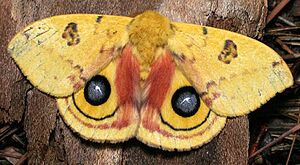Defence against predators facts for kids

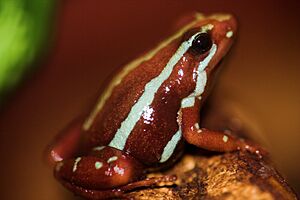
For most animals, staying safe from predators is super important. Getting eaten isn't the only danger; tiny parasites and diseases can also be deadly. But many animals, especially small ones, often become food for others. Since the main goal of life is to reproduce, anything that helps an animal live long enough to have babies will be passed down through natural selection. The next generation comes from the fertilized eggs of the one before it. So, it's no surprise that animals have developed many ways to protect themselves from being hunted. Some of these defences also help plants. Animals eating plants can cause a lot of damage and stop plants from reproducing. Many plants also have ways to defend themselves against animals that eat them.
Contents
Staying Hidden: Primary Defences
Primary defences are all about making sure a predator doesn't even find the prey in the first place. This often means the predator doesn't notice or recognize the animal it wants to eat. These defences work whether a predator is nearby or not.
Hiding and Blending In
If an animal is good to eat, it needs to either be hard to find or look like it's not worth eating. Sometimes, an animal is just too small for a predator to bother with. The energy needed to catch and eat it wouldn't be worth the effort.
- Hiding Away: Many small animals live in holes or cracks. This way, they can't be seen unless a predator searches very carefully. Some birds do this. Also, hidden animals eventually have to come out. But while they are hidden, they are quite safe. Animals often hide during the part of the day when their main predators are active.
- Camouflage: This is when animals use their colours and patterns to blend in with their surroundings. They are visible, but predators usually don't see them because they look like part of the background. This is called crypsis.
- Pretending to be Nasty: This is called Batesian mimicry. A tasty animal pretends to be bad-tasting or dangerous by looking like another animal that has warning colours.
Showing Off Defences
Some animals are naturally protected because they have special chemicals that taste bad, or their bodies have spines or stings. These animals often show off their defences so predators know to stay away.
- Warning Colours: This is the opposite of camouflage and is called aposematism. The animal uses bright colours or patterns to tell predators, "I'm not good to eat!"
- Warning Sounds: Sometimes, animals use sounds instead of colours to warn predators. This lets the animal stay hidden. Rattlesnakes are a good example. They use camouflage to sneak up on their prey, but they rattle their tail to warn larger animals not to step on them. Some moths are bad-tasting. When they hear bats flying at night, they make clicking sounds. Bats learn that these clicks mean the moth tastes bad.
- Armour and Weapons: Some animals have permanent defences like tough armour or sharp horns. For larger animals, this works well, especially if they are also very big. For example, elephants have tusks and are huge. Antelope have horns and can run very fast.
- Living in Groups: Almost all large plant-eating animals live in herds. Being in a group is much safer than being alone.
Surviving an Attack: Secondary Defences

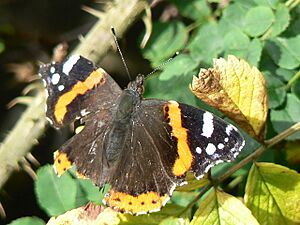
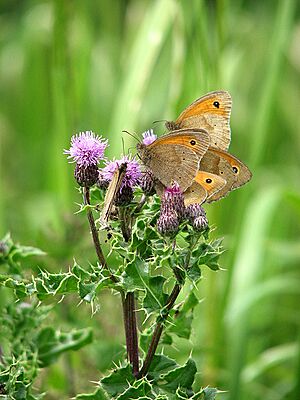
These defences are used when a predator spots an animal, or when an animal notices a predator. Secondary defences help the animal survive the meeting.
Ways to Escape or Fight Back
- Hiding in a Safe Place: Many animals quickly go back to a safe spot. For example, a tortoise pulls its head and legs into its shell. A hermit crab hides inside its borrowed shell. The pearl-fish Carapus apis can swim backwards into the body of a sea cucumber to hide!
- Running or Flying Away: This is a very common way to escape. Animals might run in a straight line or zig-zag. Some moths have bright colours on their back wings. When they fly, these colours flash, but when they land, they cover them up and become still, blending in.
- Bluffing: Animals might try to look scary or surprising. This is called a startle display or deimatic behaviour. The animal might take a pose that makes the predator pause. The predator might not know if the threat is real or just a trick. Either way, the animal has a better chance to escape.
- Playing Dead: This is called thanatosis. Many predators don't eat dead animals. Also, many predators only attack animals that move. This includes cats, lizards, and mantids. Many insects play dead when attacked. Some larger animals, like the American Opossum, also do this. Playing dead stops the predator's natural hunting instincts.
- Distracting the Attack: Many animals offer a part of their body that isn't essential. For example, butterflies often have small "targets" near the edges of their wings. If a bird pecks, it hits the wing instead of the body. Cuttlefish squirt a cloud of black ink, turn pale, and swim away quickly from the ink cloud. The Kentish plover, which lays eggs on the ground, pretends to have a broken wing to lead attackers away from its nest. When the predator is far enough, the bird flies away. Some animals can even break off a non-essential body part and grow it back later.
- Fighting Back: Animals have many weapons they use to fight face-to-face. Bombardier beetles spray hot, poisonous liquid at attackers. Large plant-eaters often have weapons: Triceratops, Iguanodon, elephants, deer, Rhinoceros, and Hippopotamus. These weapons are usually used for more than just fighting predators.
- Banding Together: Many animals form groups to defend themselves against predators. This is very common in birds and mammals.

What Defences Cost
Everything costs something, and defences are no different. All ways of protecting oneself use up energy or time. For an animal to survive, it needs food and must stay alive long enough to reproduce. The energy and time spent on defence can be a lot, but it's worth it if it helps the animal have babies. Here are some costs:
- Body Costs: Some chemicals that protect an animal might slow down its growth.
- Lost Chances: Hiding away means less time spent looking for food.
- Environment Costs: The best places for defence might not be the best places to live or find food.
- Design Costs: A body shape or colour that helps an animal blend in might not be the best for finding a mate.
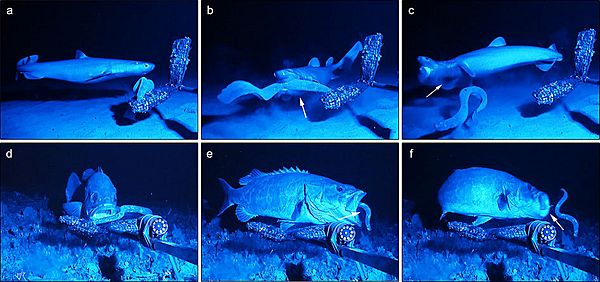
Related Topics
Other Information


